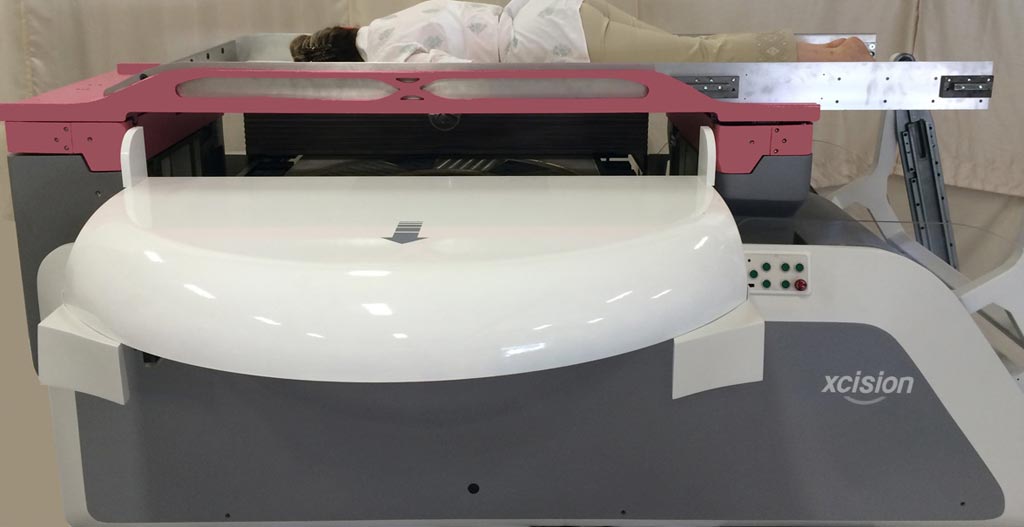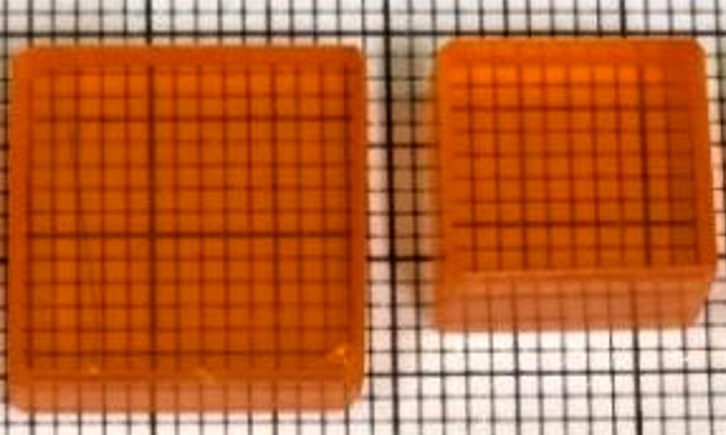Stereotactic Radiotherapy System Treats Breast Cancer
By MedImaging International staff writers
Posted on 10 Jan 2018
A new cobalt (Co60) teletherapy device delivers a radiation dose to specific areas of the breast, in conjunction with breast conserving treatment.Posted on 10 Jan 2018
The Xcision Medical Systems (Columbia, MD, USA) GammaPod system is a dedicated radiation therapy (RT) technology that uses thousands of focused beams of radiation emanating from 36 rotating radioactive Co60 sources, in combination with a two-layer, vacuum-assisted positioning cup that immobilizes the breast during treatment, thus minimizing the radiation dose to the surrounding healthy tissues in the breast, heart, and lungs. The system contains four main components:

Image: The GammaPod dedicated RT system (Photo courtesy of Xcision Medical Systems).
• The GammaPod irradiation unit, a hemispherical carrier that holds multiple Co60 sources, a hemispherical dynamically changing collimator system (inside and concentric to the source carrier), a hemi-elliptical-sphere treatment space (inside the collimator) within which the breast is positioned for treatment, and a treatment patient loader that lifts and rotates a patient positioned on a treatment couch from the standing to prone position, which also contains a portal within which the breast immobilization cup is affixed. The irradiation unit is controlled by a computerized treatment control system.
• The Imager loader system, an imaging couch intended to make the imaging geometry identical to that of the treatment geometry. The patient is lifted and rotated from a standing position to prone position for imaging while wearing a breast immobilization device, which is affixed through a portal in the imaging couch.
• The breast immobilization system, a vacuum-assisted breast cup designed to reproducibly hold the breast in place and provide an accurate reference frame to match the tumor with the coordinate system of the irradiation unit. The cup consists of a rigid reusable outer cup with an imbedded stereotactic frame and a thin inner cup joined together by a silicone flange at the chest side. A mild negative pressure is applied between the inner and outer cups, causing the skin of the breast to press against the inner cup, securing it in place.
• A treatment planning system designed specifically for planning breast radiotherapy using the GammaPod by placing the breast images within the stereotactic localization frame coordinate system through an image registration process; optimizing a dynamic and deliverable trajectory of the focal spots of different sizes to realize the prescribed dose to the target volume, while minimizing radiation exposure to the surrounding tissues and structures; and ensuring accurate dose calculation of the optimized plan and providing dosimetric indices for review.
“The GammaPod has the potential to significantly shorten the treatment time to a few sessions or possibly even one treatment,” said Professor Cedric X. Yu, DSc, CEO and founder of Xcision Medical Systems. “We envision that one day we'll be able to neutralize a tumor with a high dose of focused radiation instead of removing it with a scalpel. This approach would spare patients the negative side effects of surgery and prolonged radiation treatments, significantly improving their quality of life.”
Stereotactic radiation therapy is most commonly used to treat brain cancer and cancers in other parts of the body, such as the lung, spine and liver, where it is called stereotactic body radiation therapy (SBRT). Requirements of SBRT include precise localization of the target lesion in the treatment planning process; accounting for tumor motion due to respiration or other changes in the body; highly conformal dose distribution to the target volume, including a steep dose gradient to minimize radiation to surrounding healthy tissue; and image-guidance at the time of dose delivery for verification and adjustment of the target localization.
Related Links:
Xcision Medical Systems














